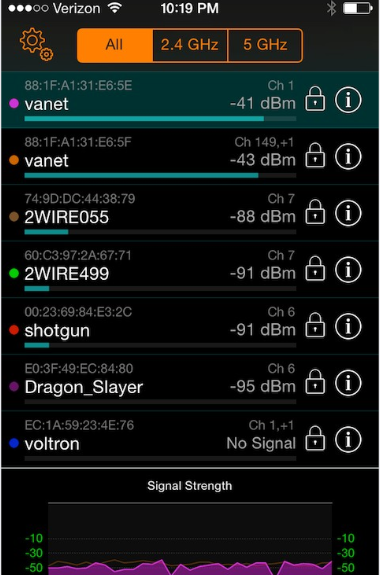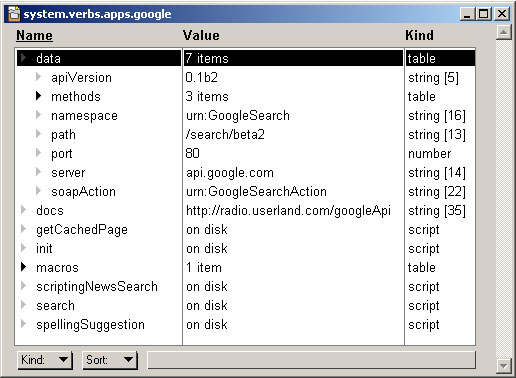- Best Wifi Channel App Mac Computer
- Wifi Channel App For Iphone
- Best Wifi Channel For Mac
- Best Wifi Channel On Mac
- Best Wifi App For Iphone
- Best Wifi Phone App
When setting up your router, you’re going to need to choose a Wi-Fi channel. So, how do you know which channel is the best? Are you dealing with unreasonably slow speeds? Or, is the connection dropping out frequently? If so, there is a good possibility that you’ve selected the wrong channel. This can cause a handful of problems. If you’ve dealing with a poor signal, slow speeds or constant drops, there is a possibility that your channel is responsible. The good news is that you’ve come to the right place. Within this in-depth guide, you will learn all about choosing the right WiFi channel.
What Is Needed
First and foremost, you’re going to need to make sure that you have everything you need. You’ll need a router. You can choose a single or dual band router. Either one should work. You’ll also need a connectable device or two. Experimenting with more than one device is recommended. It is also a good idea to choose a wireless scanning software. While this is optional, the software can definitely help you find the best channel for your unique needs and preferences. You’re also going to need access to your router’s settings. Make sure you have the username, password and IP address handy.
It is also a good idea to calm down and take your time. The process can be a little time consuming. Grab yourself a drink and a comfortable seat. You’re going to need them.
Selecting A Channel Manually
When it comes down to it, there are tons of things that can negatively impact the performance of a router. The wrong channel is among the many. With this in mind, you first need to learn a great deal more about your router’s specifications and functions. Is it actually living up to the hype? Or, is the router under performing? If the router is performing as intended and you’re not satisfied, you’re going to need to upgrade. If the device isn’t performing up to par, there is a chance that the wrong channel is impacting its performance.
The Best WiFi Analyser For Mac (2019) 1. MacOS WiFi Analyser. MacOS itself comes with a Wireless Diagnostics tool which you can use to scan all available wireless networks and get a. Fing – Network Scanner. This app’s patented technology makes millions of users trust it worldwide.
Determining Router Type
You need to understand that every router is different. The process of finding the right Wi-Fi channel is going to vary slightly from a 2.4 GHz router to a 5 GHz router. With this in mind, you need to gain a better understanding of your router before moving forward. Figure out what router you have and move on from there.
More Information About Channels
At this point in time, your router is set to a single channel. The channel will cover a handful of frequencies. There is a different between the 2.4 GHz and the 5 GHz channels. You’ll learn more about those differences below.
2.4 GHz
The 2.4 GHz is supposed to operate over a 100 MHz spectrum. In reality, it is only 80 MHz wide. There are 14 channels of 20 MHz each. With that being said, you should easily be able to see that the channels will overlap one another. In fact, some channels may overlap several other channels and this can create severe interference.
5 GHz
With the 5 GHz, you’re working with a much wider spectrum. There are more channels and the frequencies are wider. This helps to ensure that the overlapping and interference is greater limited. With the 5 GHz frequency, you will have a much easier time finding the right channel for your unique needs.
Read also: Spectrum Compatible Routers
Possible Causes Of Interference
You need to understand that there are plenty of causes of interference. Microwaves, mirrors, baby monitors and even microwaves can decrease the performance of your router. Many of these devices will operate on the 2.4 GHz band. Therefore, there is a good chance that you’re going to experience interference at some point. You might be able to solve the problem by relocating your router. Move it further away from any items that may cause interference. You can also try upgrading to the 5 GHz band. If these options are not possible, you’re going to need to change the channel.
The good news is that this won’t be too difficult.
Choosing The Right Channel
Now, you need to learn how to manually choose a channel. You already know what router you’re using and you’re certain that other items aren’t causing the interference. The process is really very similar for the 2.4 and 5 GHz frequencies. Just remember that each offers different channels. When you’re ready to get started, you will need to access your router’s admin account. Enter the correct IP address into your browser and enter the username and password. Once this is done, you should be able to access the settings. Here, you will be able to adjust the channel easily.
2.4 GHz In Most Areas
The 2.4 GHz frequency comes with 14 channels. All of these channels will overlap at least one other and this can cause interference. Therefore, it is essential to find the channel with the least amount of overlapping. There are three channels that tend to provide the best results. The three channels include 1, 6 and 11. These channels will work exceptionally well on non-MIMO setups. They should provide you with the very best speeds and the smallest risk of interferences. Be sure to experiment with these channels a bit to find the one that works best for you.
Best Wifi Channel App Mac Computer

5 GHz In Most Areas
When messing with the 5 GHz channels, you will quickly find that your options are wider. There are more channels to choose from. At the same time, there are plenty of room on higher frequencies. This is definitely a good thing. In total, you will be able to choose between 23 channels and none of them are overlapping. This ensures that you’ll experience far less interference. To ensure that you get the best connection, it is always a good idea to stick with 20 MHz channels.
Other Options
If you’re still having problems, you should think about using a Wi-Fi checking. This will scan your local area and discover which channel works best for you. These programs are often free and they work great. The Wi-Fi Analyzer and Acrylic Wi-Fi are two good options.
Resources:
https://www.netspotapp.com/wifi-channel-scanner.html
https://www.howtogeek.com/197268/how-to-find-the-best-wi-fi-channel
A WiFi network introduces a variety of issues that can negatively impact your ability to connect and stay connected. These factors can also lead to network speed and security concerns that you will not face with a wired connection. Here are some of the configuration and installation concerns that you may experience when you employ a WiFi network.
- WiFi router location – Where you place your WiFi router can have a tremendous impact on the ability of your wireless network to serve all of its intended users. You need to strive for a centralized location that is free from physical obstructions which can affect the reach of the WiFi signal. Incorrect placement will lead to a proliferation of dead spots where your devices cannot connect to the network.
- Security – You need to ensure that your WiFI network is protected by at least WPA2 level encryption and a strong password, preferably one of at least twelve characters. This will minimize the possibility of your network falling victim to a brute force attack that can compromise your password and allow unauthorized access.
- Slow and dropped connections – This is one of the most common issues with WiFi networks. It can often be traced to overuse of specific WiFI channels. Modifying the channel that your router uses can greatly reduce or eliminate these types of problems. Use of a WiFi scanner is a great way to monitor and analyze your current WiFi channel usage and make informed decisions that can drastically improve the utility of your network.
What Exactly is a WiFi Channel?
WiFi routers can use two different frequency bands to produce their signal: 2.4GHz or 5GHz. Some routers are dual-band and can deliver their signal using whichever frequency you choose to employ. Each frequency contains a number of smaller frequency bands used for signal transmission. These smaller bands are referred to as WiFi channels.
There are differences in how the two frequencies perform when providing their signal to connected devices, according to lifewire.com. These differences may impact which type of router is best for your particular situation. Let’s take a quick look at what makes each frequency distinctive.
2.4 GHz frequency
Slower data transmission speed.
Larger network coverage area due to extended range.
More susceptible to interference from other household devices that use the same frequency.
The number of available channels is 11.
5GHz frequency
Greater data transmission speed.
Reduced network coverage area due to a shorter range and an inability to penetrate solid objects.
Less interference as not many other devices use the 5GHz frequency band.
The number of available channels is 45.

Why do Certain Channels Incur More Interference?
The reason that certain WiFi channels may offer better performance for your connected devices is related to the interference that a particular channel may be experiencing. Interference in the work of WiFi channels comes in two flavors.

Co-channel interference – This type of interference, also known as crowding, occurs when a number of devices are competing for bandwidth on the same channel. This can cause slower than expected data transmission and dropped connections.
Adjacent-channel interference – When devices from overlapping channels are attempting to talk over each other, adjacent-channel interference can occur. The bandwidth and number of channels associated with 2.4GHz routers make these devices susceptible to this type of interference.
Why You Should Use a WiFi Channel Scanner
If you are experiencing slow data transmission speeds or dropped connections, a likely cause is interference that is impacting the channel that your router is using. Through the use of a WiFi channel scanner app, you can monitor the channels that you and neighboring routers are using and perhaps change channels.
Wifi Channel App For Iphone
Many users never change their router channel, leaving it at the manufacturer’s default setting. This may not be the best channel for optimal performance of your WiFi network. Logging into your router lets you change the channel that it will use to transmit its signal. Changing it randomly may solve your issues, but you are far more likely to succeed with the information gleaned from scanning the channels.
In areas where there are a number of routers with overlapping ranges, moving to an unused channel can dramatically improve the reliability and speed of your WiFi network. Apartment dwellers are particularly prone to having their networks impacted by other routers. Let’s find out how to use a WiFi scanner app to locate the best channel for you to use.
Using KisMAC to Scan Your WiFi Channels
Best Wifi Channel For Mac
KisMAC is an open-source, freeware WiFi channel scanning tool that can help you tune your router and find the appropriate channel for your network. It is designed for the Mac and is designed for use by experienced network security professionals. The tool has powerful capabilities beyond that of channel scanning, and its use is prohibited in some European countries.
You may need to use an additional network card as KisMAC does not support some of the cards installed on newer Macs. Once you have KisMAC up and running, initiate a scan of all nearby WiFi networks. Detailed information regarding each network will be displayed in the application’s window, including the channel that the router is using. You can use this information to make an informed decision about which channel you should configure your router to use.
The Best WiFi Channel Scanners for macOS
Here are some other WiFi channel scanners that you can run on your macOS system.
NetSpot
Best Wifi Channel On Mac
NetSpot is a full-featured WiFi tool that runs on the Mac and Windows platforms. You can conduct surveys on your own and nearby wireless networks in order to ascertain the channels that are overloaded. The app offers a user-friendly interface that makes it easy to scan your WiFi channels and you can save reports in a variety of formats for later analysis. It is available as a free trial download that should be sufficient for channel scanning purposes.
Best Wifi App For Iphone
WiFi Scanner
This tool is available at the iTunes App Store and provides all the features that you need to successfully scan WiFi channels in your quest for optimal network performance. Data can be exported to CSV files making future analysis a simple task.
WiFi Signal
Best Wifi Phone App
Here is another iTunes app that will enable you to scan your WiFi channels as well as display other information about any nearby networks, including your own. It is a simple and inexpensive tool that can easily show you if you are using an overloaded WiFi channel.
Now you know more about WiFI channels and how they can impact your network than the average computer user. Proper use of this knowledge can lead to improved WiFi network performance, and that’s never a bad thing.